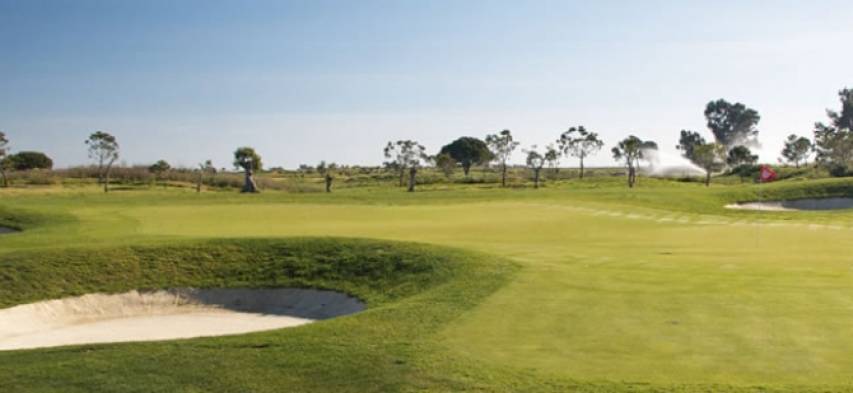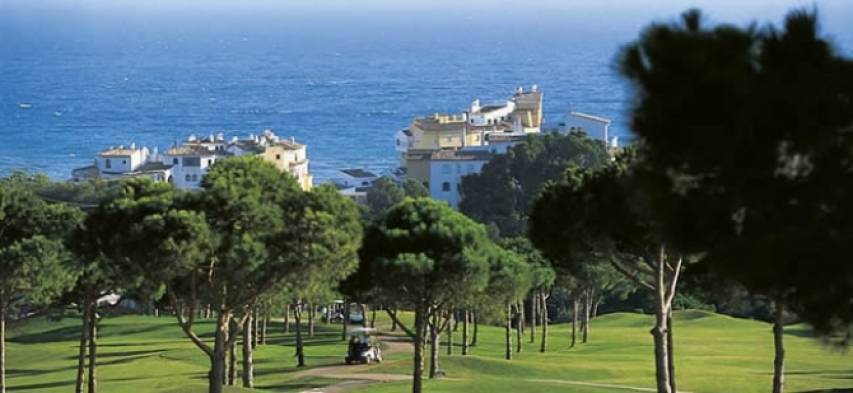"We are the premier golf tourism destination in Europe"
He has the honour, and great responsibility, of presiding over the federation with the highest number of golf courses in Spain, and around 45,000 registered players. Pablo Mansilla, who in just a few weeks time will mark his first year heading the Royal Andalucian Golf Federation, assesses the first months of his term as president, and talks about the past, present and future of golf in Andalucía.
He believes it is possibly “a little too soon” to be making an assessment “because it’s been barely nine months for us”, but he still rates it as being “quite positive”. He adds that “it is true the economic situation has improved noticeably, and that has an influence, the same as support from public institutions, who help a lot.
“We are regaining golf courses that had been closed, and which are now starting to open again, which is good news, and we have the feeling that golfers who are members of the federation are fairly satisfied, although much of that possibly has nothing to do with us and is more due to an improvement in the economic situation. Nevertheless, we are keen, working hard and spending a lot of time to ensure that both golf courses and federation golfers, as well as the whole golfing world in general in Andalucía, are pleased with what the federation is doing.”
What are the weaknesses and strengths of golf in Andalucía at the moment?
Our strength is highlighted by the fact we are the premier golf tourism destination in Europe, as we have an extensive and diverse range of courses, an incomparable climate and first-class infrastructure. Any weakness might be a consequence of that position, because as golf tourism leaders we have times when player numbers are high and demand is considerable, and courses obviously have to market themselves. This means that, in a purely sporting sense, we have to tie up many loose ends in order to be able to host competitions at Andalucian courses. I would also like to highlight another strength of Andalucian golf, and Spanish golf in general: the quality of management at golf clubs, which has improved vastly in recent years.
How is your project to take golf into schools, and schoolchildren to golf courses, progressing?
Actually, very well. All the contacts we have made have been very positive, both public and private and charter schools. We are working in all the provinces and the response from schools has been very good. There are two kinds of initiatives. The programme’s theoretic initiative is associated with the fact that in Andalucía, as part of the physical education curriculum, schools are required to choose three sports to be offered during the year – one sport each term – and our objective is that one of those sports chosen by schools is golf. Golf classes will, at the start, involve programmes at the schools then visits to golf courses. To that end, we need to have the school and the course on board.
That is the original golf programme for schools. Some schools are adopting this initiative and it is probably the best way to introduce golf because the boys and girls don’t have to consider golf as being an extra-curricular activity. Then there is a second group of schools that are looking at golf as an activity outside school hours, especially on the Costa del Sol. We are also making great advances in this respect, and we are actually negotiating with a key group of schools, around 20 of them, to become involved.
What was the response to the Young Golf programme promoted by the Andalucian federation over summer, to encourage children (for free) and young players (at considerably reduced green fees) to play golf at courses around the region?
Fantastic. Nearly all the courses were involved. The initiative was prompted by Carlos Pitarch and his golf course marketing and promotion committee, and it was a fantastic idea warmly welcomed by everyone and praised throughout Spain.
Are there plans to extend the programme during the school year?
Returning to what I mentioned before, the problem for golf courses in Andalucía – their strength and weakness at the same time – is that they have to market themselves and make money, and obviously during summer not as many rounds are played because it’s the golfing low season. When summer ends, they don’t have so many free hours, and also with the Young Golf programme we are mainly talking about schoolchildren, and when they return to school they don’t have as much free leisure time. So that’s why it’s very difficult to maintain the Young Golf programme in winter.
The Spanish Ladies Open at Royal Guadalmina, Andalucía Valderrama Masters, Match Play 9 at La Cala… What does it mean for Andalucian golf that major tournaments are once again being held in the region?
It’s clear that we need to showcase the destination. At the moment, the Costa del Sol and Andalucía are enjoying significant levels of golf tourism, and also welcoming tourism that we could describe as “on loan”: that is, golfers who previously travelled to other countries where, because of political circumstances, the number of players at their golf courses have been reduced considerably. We are talking about Tunisia, Turkey and Egypt, countries where terrorism has done a lot of damage, although no country is immune, as has been sadly demonstrated here in Spain.
Nevertheless, the moment will come when these destinations normalise their situation, so we have to keep selling our destination and remain in the public eye. It is essential for Andalucian golf clubs that Andalucía continues to be recognised internationally as a major golf destination. However, on the other hand, from a sporting point of view, it is also important that people see golf as something normal, fun and enjoyable because that’s the way to encourage people to play the sport. Ever since Rafa Nadal came onto the scene, and was featured on television, obviously there have been more tennis players. And we have to do the same by hosting major golf tournaments.
How would you define the current state of Andalucía golf? Is it enjoying good, average or precarious health?
From a commercial point of view, these are good times. Obviously, the health of Andalucian golf in 2008-2009 was fantastic, there were some peaks until 2012 – in my view slightly artificial peaks – and after that we suffered a major golf crisis, a crisis in the number of registered golfers, in players in general. We are returning to that healthier situation, although it is also true that this is still not being noted in registered golfer numbers, but we are hopeful of recovery in this aspect as well. We are now almost stabilised. And another positive aspect is that clubs which left the federation are re-joining.
Are enough younger golfers joining up to cover the loss of “retired” players?
The main concern we have is related to the situation with girls, not only in Andalucía but in the whole of Spain. There has always been a problem of too few girls, but the situation has worsened. This year in the Spanish championship for under-14s, under-12s and under-10s, I believe we had only two under-10 representatives from Andalucía. So we need to boost that area.
As a referee of international renown, and Spain’s only representative among the referee ranks at the Olympic Games golf tournament in Rio de Janeiro, what is your opinion about the Ready Golf programme promoted by international authorities to try to speed up the pace of play and make it more efficient?
A major problem in golf around the world is the pace of play. We need to make golf more attractive, and one of the things that makes it least attractive is the time it takes to play golf. Obviously, that has to change. So how can this be changed? Well, by changing the rules, of course, and we are in fact going to do that.
Next year the definitive rules will be published, and they will come into effect in 2019, incorporating the concept of Ready Golf. I think this is fantastic because I believe we obviously need to change the way we play golf to make it quicker and therefore more attractive. We saw that this year in the Andalucía Costa del Sol Match Play 9, which we promoted and which demonstrated to people that you can play just nine holes.
I have always said, this is not something new: when I was a child I always played nine holes, very rarely 18 holes. We need to show people that it is perfectly feasible to play nine holes, and there are even people saying that a round of golf should be 12 holes and, if you don’t have enough time, six holes. This is a way of adapting to the new era, when everything is quicker, we are extremely busy and we can’t spend so much time on our hobbies. Ready Golf is one important option. While still preserving the essence of golf, you can do many things to improve it.







